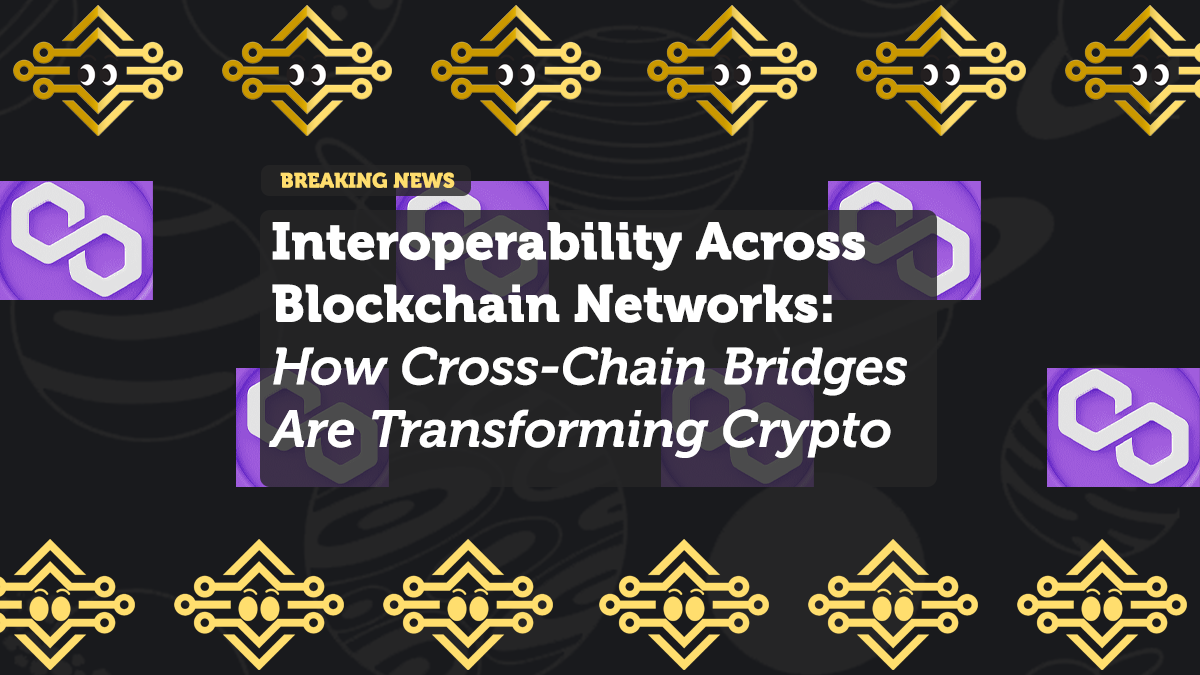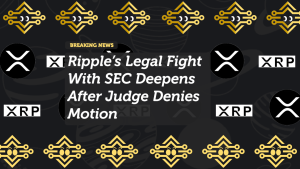
Interoperability Across Blockchain Networks: How Cross-Chain Bridges Are Transforming Crypto
Blockchain networks have long operated in silos, each with its own ecosystem, consensus mechanisms, and use cases. However, as the crypto industry grows, the need for seamless interaction between these networks has become increasingly apparent.
Enter blockchain interoperability—the solution to fragmented networks. With cross-chain bridges and standardized protocols, projects like Polkadot and Cosmos are enabling assets and data to flow freely across different blockchains. This advancement is unlocking new possibilities for decentralized applications (dApps), decentralized finance (DeFi), and broader blockchain adoption.
In this blog, we’ll break down how interoperability works, the key technologies driving it, and what it means for the future of crypto.
Polkadot’s Approach to Blockchain Interoperability
Polkadot, founded by Ethereum co-founder Gavin Wood, is one of the leading projects focused on blockchain interoperability. It achieves this through its Relay Chain, parachains, and bridges that connect different blockchain networks.
Key Features of Polkadot’s Interoperability Model
✅ Cross-Consensus Messaging (XCM):
Polkadot’s XCM protocol enables secure and trustless messaging between parachains, external blockchains, and smart contracts. This allows seamless asset transfers, data sharing, and cross-chain smart contract execution.
✅ Parachains:
Independent blockchains that connect to the Polkadot network, benefiting from shared security while maintaining unique functionalities.
✅ Bridges to External Blockchains:
Polkadot enables interoperability beyond its ecosystem by creating bridges to Ethereum, Bitcoin, and other networks. These bridges allow liquidity to flow between major crypto networks, expanding the usability of assets across chains.
Why Polkadot’s Interoperability Matters
- Reduces network fragmentation by connecting different blockchains.
- Enhances liquidity flow between ecosystems, benefiting DeFi applications.
- Enables seamless cross-chain transactions without centralized intermediaries.
Cosmos and the Inter-Blockchain Communication (IBC) Protocol
While Polkadot uses a Relay Chain model, Cosmos takes a different approach by creating an “Internet of Blockchains” powered by the Inter-Blockchain Communication (IBC) protocol.
How Cosmos Enables Interoperability
✅ IBC Protocol:
The IBC protocol enables secure communication between different blockchains, allowing them to transfer tokens and data efficiently.
✅ Tendermint Consensus:
Cosmos chains use the Tendermint consensus mechanism, ensuring fast finality and secure cross-chain communication.
✅ Hub-and-Spoke Model:
Cosmos operates with a central Cosmos Hub that connects multiple blockchain zones, allowing seamless asset movement across independent chains.
Key Benefits of Cosmos’ Interoperability Model
- Provides a universal standard for blockchain communication.
- Allows projects to maintain sovereignty while still interacting with other chains.
- Enables seamless DeFi integrations and multi-chain applications.
Cross-Chain Bridges: Connecting the Crypto Ecosystem
Beyond Polkadot and Cosmos, cross-chain bridges play a vital role in blockchain interoperability. These bridges enable users to move assets between otherwise incompatible networks.
How Cross-Chain Bridges Work
Most cross-chain bridges use a lock-and-mint mechanism:
- The original asset is locked on the source blockchain.
- A wrapped version of the asset is minted on the destination chain.
- When the user wants to retrieve the original asset, the wrapped token is burned, and the locked asset is released.
Examples of Popular Cross-Chain Bridges
✅ Ethereum-Binance Smart Chain Bridge – Transfers assets between Ethereum and BSC, supporting ERC-20 tokens.
✅ Polygon Bridge – Connects Ethereum and Polygon, allowing faster and cheaper transactions.
✅ Avalanche Bridge – Links Ethereum and Avalanche for seamless DeFi interactions.
The Benefits of Blockchain Interoperability
Interoperability is more than just a technical achievement—it brings tangible benefits to the entire blockchain ecosystem.
1. Expanded DeFi Opportunities
DeFi protocols can leverage liquidity from multiple blockchains, improving efficiency and user access.
2. Greater Asset Mobility
Users can move assets between chains without relying on centralized exchanges.
3. Improved Scalability
By distributing workloads across different blockchains, interoperability enhances network performance and reduces congestion.
4. Enhanced Collaboration Across Ecosystems
Different blockchains can work together, enabling more innovative and integrated applications.
Challenges of Cross-Chain Interoperability
While interoperability is a game-changer, it comes with challenges that need to be addressed.
1. Security Risks
Cross-chain bridges have been prime targets for hackers, leading to multi-million-dollar exploits. Securing these protocols is crucial for widespread adoption.
2. Complexity in Implementation
Developing secure and efficient interoperability solutions requires advanced cryptography, smart contract audits, and ongoing security measures.
3. Regulatory Uncertainty
As blockchain interoperability grows, regulators may impose restrictions on cross-chain transactions, affecting how these technologies evolve.
The Future of Blockchain Interoperability
Interoperability is set to revolutionize blockchain technology by connecting previously isolated ecosystems. As cross-chain protocols improve, we can expect:
- More robust security frameworks for cross-chain bridges.
- Greater institutional adoption as enterprises leverage multi-chain networks.
- Wider integration of DeFi and NFTs across multiple blockchain platforms.
With projects like Polkadot, Cosmos, and advanced cross-chain bridges leading the way, a truly interconnected blockchain future is closer than ever.
Final Thoughts: Is Interoperability the Key to Blockchain’s Future?
Interoperability is not just a buzzword—it’s the foundation of a more efficient, scalable, and user-friendly blockchain ecosystem. As technology advances, seamless communication between blockchains will enable new financial services, decentralized applications, and real-world blockchain adoption.
What are your thoughts on blockchain interoperability? Do you see it as the key to mass crypto adoption? Let us know in the comments!
















